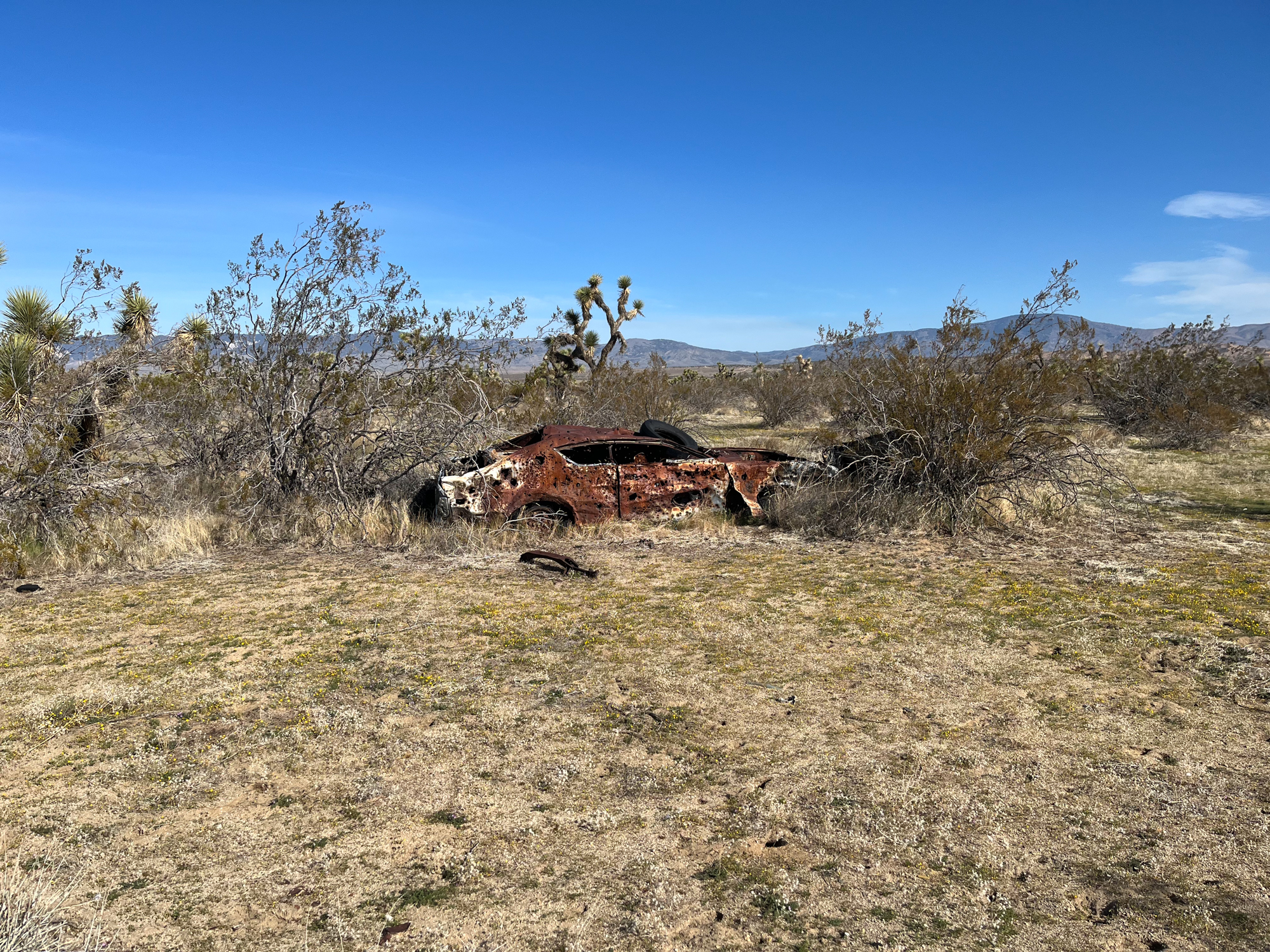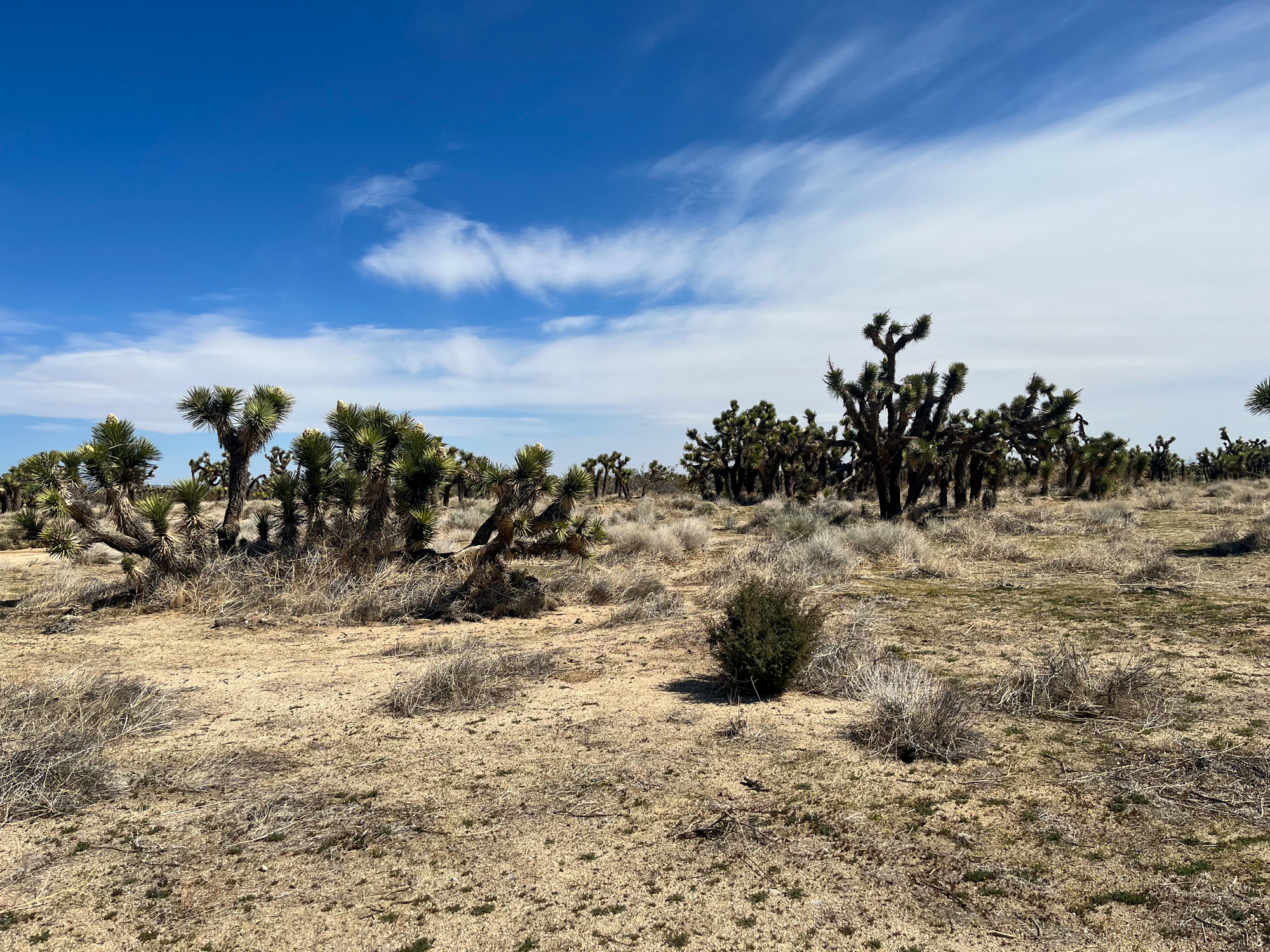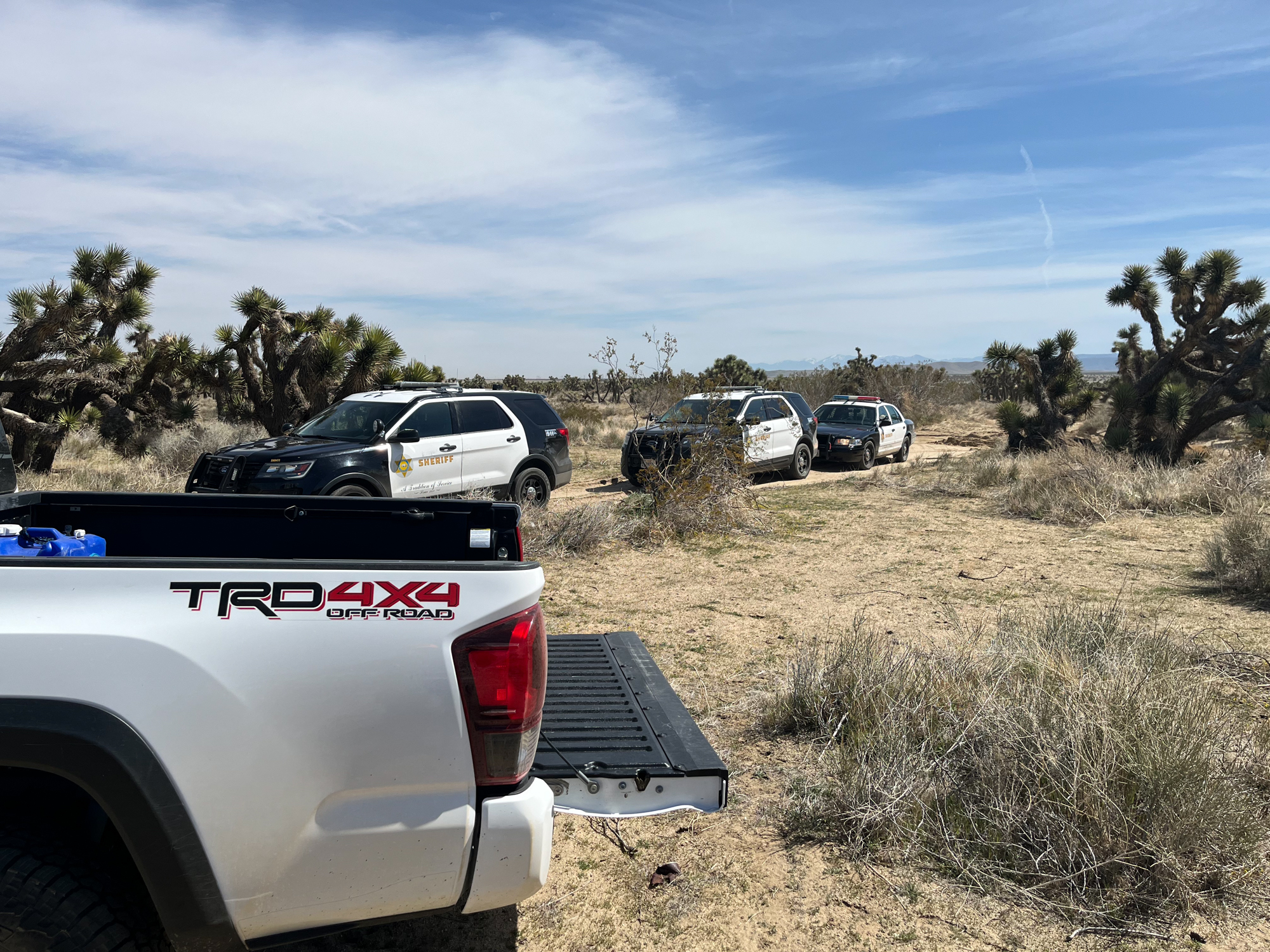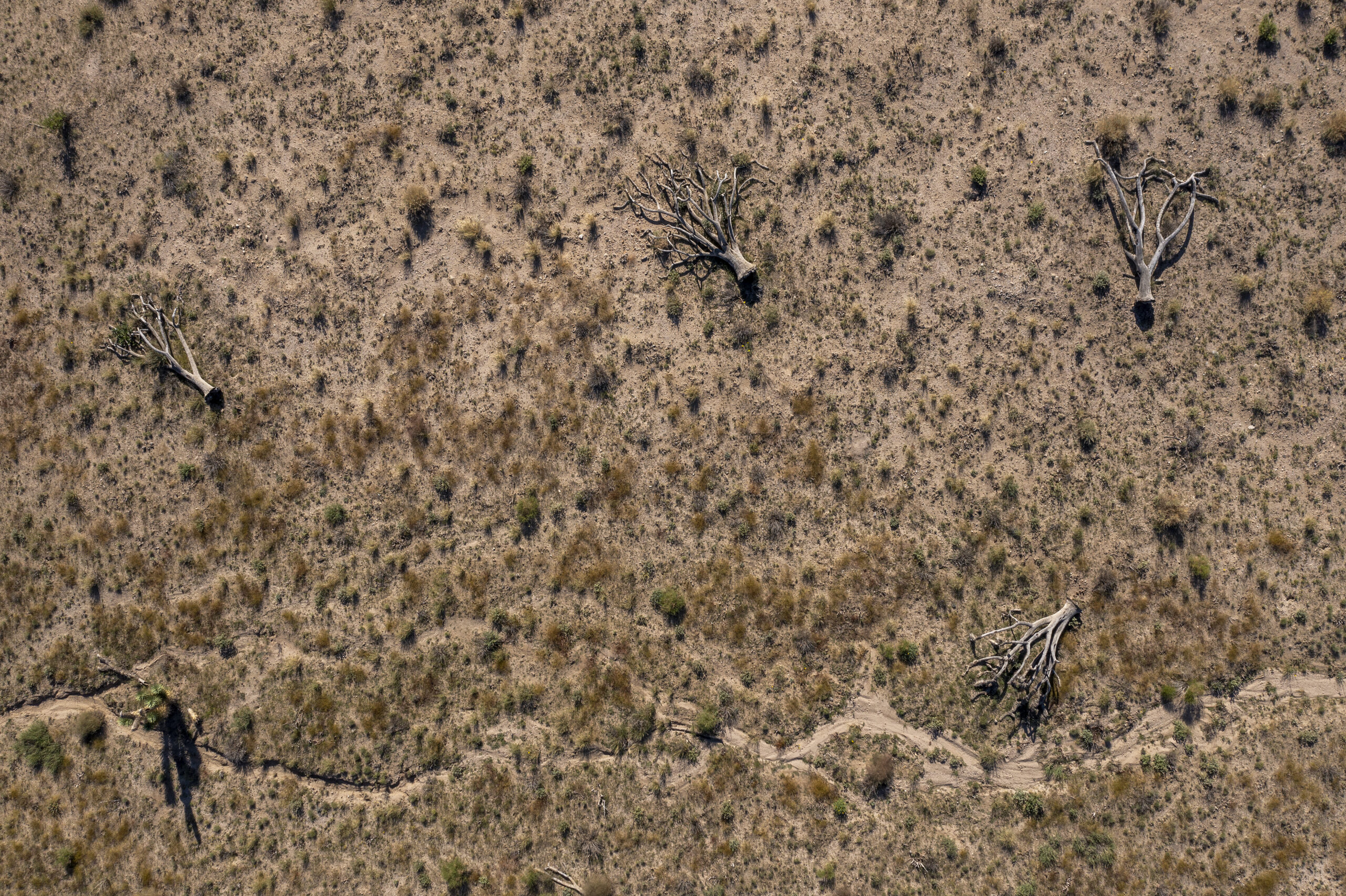A LONE DOVE soared over us, and Kent abruptly stopped his Tacoma on the side of a dirt road. He and I debated whether to get out. We’d hiked 5 miles that morning in futile pursuit of doves and jackrabbits and were about ready to call it a day.
But then the dove landed atop a Joshua tree, maybe 50 yards away. We didn’t want to leave empty-handed, so we grabbed our shotguns and stepped out to turn that symbol of peace into an afternoon snack.
We spread out and moved on the dove. As we drew closer, I casually clocked Kent’s location on my right. Finally, we arrived in range. Kent gave me a thumbs-up. I clicked my safety off, took a few more steps, and checked Kent’s position once more.
This time, an extra set of eyes stared back.
A Chance Meeting
I’d met Kent Kachigian about a month before, on the last day of California’s 2022 quail and rabbit season. I can only describe our introduction as a redneck meet-cute. I was headed to a spot in the Angeles National Forest about an hour from my apartment in Los Angeles. I saw Kent’s truck parked where I’d intended to hunt, so I went elsewhere. When I returned later to hit the spot, Kent was sitting on his tailgate with his retriever, Rosie. I introduced myself. We had plenty in common.
I live in L.A. Kent owns property there. I drink Tecate. Kent keeps limes in his truck. I wanted more hunting buddies, and Kent did, too.

We chatted, drank a beer, and exchanged numbers. He told me he’d invite me the next time he went out. And as a new hunter in a state where less than 1 percent of the population hunts, I was thrilled.
All of that is to say, when we went hunting on March 13, 2022, we didn’t really know each other. We arrived in the Antelope Valley, about an hour and a half outside of L.A., around 9 a.m. Kent was bummed to find that most of the farmland where he’d once chased jackrabbits had been overtaken by solar farms.
After driving the area, we finally settled on a large swath of untouched land dotted with Joshua trees and scrub brush. It didn’t take long before we were bumping black-tailed jackrabbits and missing shots on Eurasian collared doves, two species that can be hunted year-round in California.
We eventually returned empty-handed to Kent’s truck to drive around the area. We’d barely made it another couple hundred yards down a sandy road when that lone dove flew over.
A Skull in the Desert
That second set of eyes that stared at me weren’t eyes after all. They were hollowed-out eye sockets on a human skull, lying on its left side in the dirt. I got this sick feeling I hadn’t felt since I worked as a crime reporter in New Orleans in my 20s. It’s a mixture of adrenaline and nausea. I used to experience it so regularly it had stopped bothering me, but now it was back in full force. Kent could tell something was wrong.
“What?” He asked.
“There’s a skull.”
Kent nodded, like Cool, sure.
“No really. There’s a human skull.”
Again, Kent looked at me like I was an idiot. I’d later learn he did, in fact, think I was an idiot in that moment. He figured I’d seen a cow skull.
“I’m serious.”
I walked toward the skull, and my impression was confirmed. It’s hard to tell how long it had been there. It was fleshless and picked clean by scavengers, yet its teeth were still intact. I had the feeling if I put my face close enough, it would have smelled.
We knew we had to call it in. We also knew our hunting trip was officially a bust.
As we walked back to the truck, a few details began to stand out: There was a walking cane and a wallet on the ground near a pile of tattered sweatpants. I knew not to touch the wallet with my hands, so I used the barrel of my Remington 870 to nudge it open. It was packed with credit cards and a driver’s license, half-hidden in the folds. Knowing the cops would likely fingerprint it, I resisted the urge to investigate further.

When we reached the road, I texted my fiancée about our macabre discovery. She immediately responded, suspicious of my new hunting partner.
“My fiancée is asking how well I know you,” I told Kent, grinning nervously. He had his shotgun cracked over his shoulder, his own cell phone in hand.
He looked back at me. “My wife’s asking the same thing.”
An Enduring Mystery
“How do you know it’s a skull?” the deputy on the phone asked. Kent and I looked at each other, dumbfounded by the question.
“Uh, because it is,” I replied.
“Can you send a picture?”
“Sure,” I said. The deputy gave me his number, and I texted him a photo. He went silent.
“Okay, yeah, I’m sending guys out now.”
Considering we were in the middle of a desert, Kent and I figured “now” meant somewhere in the next hour so we hunted another area nearby (again to no avail), then cracked a Tecate. Eventually, two L.A. County Sheriff’s Department deputies arrived, and we walked them to our discovery.
“Yeah, that’s a skull,” one said, still sounding dubious about the legitimacy of our claim. They called in additional units. I thought we might be questioned as suspects. Instead, the deputies asked if we wanted to canvas the area with them.
We obliged. The deputies were short on words while we searched, but they did mention the area we were in is a frequent dumping ground for L.A. gangs: Gang members will kill someone in the city, drive them out to the valley, and bury the body in a shallow grave. Coyotes eventually dig up said grave and scatter the body parts.

His point was proven moments later when we found a human spine maybe 50 yards from the skull. The ribs had been chewed away, but we could tell it was human by the purple metallic pins in the lower lumbar area. The deceased had undergone back surgery at some point.
The deputies took our names then, and when their crime scene crew arrived, they kicked us out of the area. We left, anxious to see what news reports would reveal of the incident.
To my surprise, there was nothing. In my experience reporting crime, law enforcement agencies generally send out a press release within hours of a discovery like ours. There would be scant information in the presser—the time and place the body was found—but at least there was something.
The Sheriff’s Department released nothing that day. Or the day after. Or the week after.
My curiosity compounded to the point I called the Sheriff’s Department one afternoon to ask. A public information officer told me there had been nothing new so the agency didn’t release any information. That seemed weird to me, because they had talked to the media in similar past instances. I tried calling again for this story—twice—and was transferred to the assigned detective, but he hadn’t returned my calls as of publication.
Kent and I often text about our theories. He thinks workers building the solar fields found the body during construction and relocated it to avoid the delays an investigation might cause. The screenwriter in me was fascinated by the possibility of a more far-fetched story, one that would be better suited for TV: alleged notorious gangs within the sheriff’s department were behind the murder, and they kept it out of the media when we found the remains.
A friend of mine who’s a former Los Angeles police officer reminded me the truth may be more mundane and distressing: Cases of elder abuse and neglect in desert communities often end with dumped bodies.
Regardless of the circumstances, I hope those remains will be identified one day, and that our discovery will bring some closure to their family.
In the meantime, they say tragic experiences can bring people together. That proved true in my case; Kent and I are now good friends. But we have yet to bag a dove.
Read more OL+ stories.
